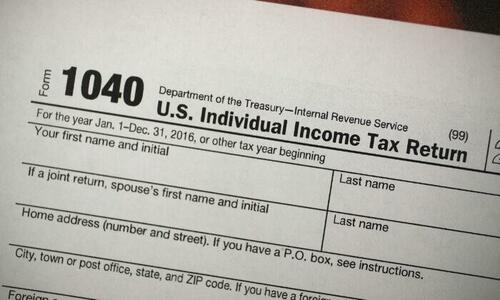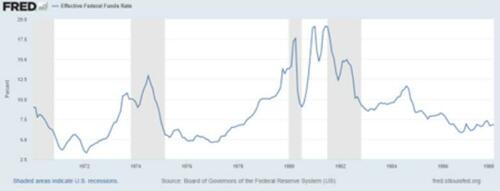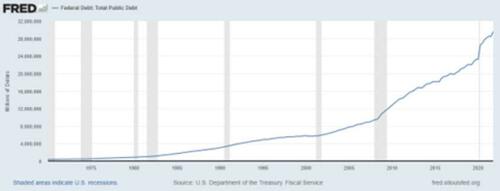Because the public version of the Mar-a-Lago search warrant affidavit is heavily redacted, it does not resolve lingering questions about the FBI’s justification for searching former President Donald Trump’s residence at his Palm Beach resort. But the document does shed some light on the circumstances that led to the August 8 search, during which the FBI seized 11 sets of documents marked as classified, along with unclassified presidential records that belonged in the National Archives. The affidavit—which was unsealed by U.S. Magistrate Judge Bruce Reinhart, who approved the search warrant—also clarifies Trump’s defense against possible criminal charges stemming from his retention of those documents.
According to the affidavit, which the Justice Department published today, the National Archives and Record Administration (NARA) first requested the return of missing presidential records on May 6, 2021, three and a half months after Trump left office. It “continued to make requests until approximately late December 2021,” when “NARA was informed twelve boxes were found and ready for retrieval.” Trump’s representatives ultimately turned over 15 boxes in January, a year after President Joe Biden’s inauguration.
On February 9, after NARA discovered that the boxes contained classified documents, it referred the matter to the Justice Department. NARA reported that the boxes contained “newspapers, magazines, printed news articles, photos, miscellaneous print-outs, notes, presidential correspondence, personal and post-presidential records, and ‘a lot of classified records.'” It said “highly classified records were unfoldered, intermixed with other records, and otherwise unproperly [sic] identified.”
From May 16 to May 18, “FBI agents conducted a preliminary review” of the 15 boxes. They found “184 unique documents bearing classification markings, including 67 documents marked as CONFIDENTIAL, 92 documents marked as SECRET, and 25 documents marked as TOP SECRET.”
Some of the documents had markings requiring special handling: HCS (HUMINT Control System), FISA (Foreign Intelligence Surveillance Act), ORCON (Originator Control), NOFORN (Not Releasable to Foreign Nationals), and SI (Special Intelligence). The affidavit notes that HCS and SI fall under the heading of “sensitive compartmented information” (SCI), which refers to “classified information concerning or derived from intelligence sources, methods, or analytical processes” that “is required to be handled within formal access control systems.”
The affidavit includes a May 25 letter from Trump lawyer Evan Corcoran to Jay Bratt, chief of the Counterintelligence and Export Control Section in the Justice Department’s National Security Division. Corcoran said documents “purportedly marked as classified” were “once in the White House and unknowingly included among the boxes brought to Mar-a-Lago by the movers.” He portrayed Trump as completely cooperative with NARA’s requests. “The communications regarding the transfer of boxes to NARA were friendly, open, and straightforward,” he wrote, adding that Trump “readily and voluntarily agreed” to relinquish the records.
Corcoran urged Bratt to keep in mind “a few bedrock principles.” First, “a president has absolute authority to declassify documents.” Second, “presidential actions involving classified documents are not subject to criminal sanction.”
Under 18 USC 1924, Corcoran noted, it is a felony, punishable by up to five years in prison, for “an officer, employee, contractor, or consultant of the United States” to knowingly remove classified records “without authority and with the intent to retain such documents or materials at an unauthorized location.” That provision, he said, “does not apply to the President,” who does not qualify as “an officer, employee, contractor, or consultant of the United States.” Corcoran also warned that “any attempt to impose criminal liability on a President or former President that involves his actions with respect to documents marked classified would implicate grave constitutional separation-of-powers issues.”
Corcoran did not address 18 USC 793(e), one of the statutes that the FBI would later cite in its search warrant affidavit. As relevant here, that provision applies to anyone who has “unauthorized possession” of “information relating to the national defense” that he “has reason to believe could be used to the injury of the United States or to the advantage of any foreign nation” and who “willfully retains” that information and “fails to deliver it to the officer or employee of the United States entitled to receive it.”
The definition of that offense, which is a felony punishable by up to 10 years in prison, does not hinge on the defendant’s job. Nor does the statute mention classification, although defense information of the sort it describes presumably would be classified.
Corcoran also did not address the two other laws that the Mar-a-Lago search warrant cited. 18 USC 2071 makes it a felony, punishable by up to three years in prison, to conceal, remove, or destroy a U.S. government document. 18 USC 1519 makes it a felony, punishable by up to 20 years in prison, to conceal “any record, document, or tangible object” with the intent to “impede, obstruct, or influence” a federal investigation.
After noting Corcoran’s letter, the FBI affidavit mentions a May 5 Breitbart News story in which Kash Patel, a former National Security Council staffer who represented Trump in his negotiations with NARA, asserted that Trump “had declassified the materials at issue.” That paragraph is followed by two-and-half completely redacted pages, which might include the FBI’s rebuttal of the argument that Trump cannot be criminally liable for retaining sensitive documents because they were no longer classified.
Trump claims he had “a standing order” as president that automatically declassified any material he happened to remove from the Oval Office. It is not clear whether Trump ever actually issued such an order, which was news to John Bolton, who served as his national security adviser for 17 months in 2018 and 2019, and to Glenn Gerstell, who served as general counsel for the National Security Agency from 2015 to 2020.
Even if Trump did declassify the documents he retained when he still had the authority to do so, that would not be relevant under 18 USC 2071 or 18 USC 1519. Depending on how “information relating to the national defense” is defined, declassification might not be relevant under 18 USC 793 either. If we were allowed to read it, the blacked-out section of the affidavit that follows the reference to Patel might clarify the FBI’s position on that issue.
On June 8, according to the affidavit, the Justice Department sent Trump’s lawyers a letter that “reiterated” the government’s concerns about the security of the documents stored at Mar-a-Lago. “As I previously indicated to you, Mar-a-Lago does not include a secure location authorized for the storage of classified information,” the letter said. “It appears that since the time classified documents…were removed from the secure facilities at the White House and moved to Mar-a-Lago on or around January 20, 2021, they have not been handled in an appropriate manner or stored in an appropriate location. Accordingly, we ask that the room at Mar-a-Lago where the documents had been stored be secured and that all of the boxes that were moved from the White House to Mar-a-Lago (along with any other items in that room) be preserved in that room in their current condition until further notice.”
The New York Times reports that Trump’s staff responded to the Justice Department’s concerns by replacing the padlock on the storage room. But after obtaining surveillance video from Mar-a-Lago, the FBI reportedly was alarmed by footage of people removing material from that room. And contrary to the Justice Department’s request that all of the classified documents be kept in that location, the Times says, the FBI search found some in the closet of Trump’s office.
After the affidavit quotes the June 8 letter from the Justice Department, the narrative is again interrupted by several pages of complete redactions. But around the same time, according to the Times, “aides to Mr. Trump turned over a few dozen additional sensitive documents” in response to a federal subpoena. The FBI worried that there were more, and evidently, it confirmed that suspicion by interviewing people who had seen classified documents at Mar-a-Lago after the June visit.
Verifying that point would have been crucial in establishing probable cause to believe that a search would find items “possessed in violation of” the three laws that the FBI cited. But the section of the affidavit describing the evidence supporting that conclusion is blacked out, presumably because it would reveal the FBI’s sources and compromise its ongoing investigation. Based on that redacted information, the FBI sought and received permission to search not only the storage room but also Trump’s “residential suite, Pine Hall, the ’45 Office,’ and other spaces” at Mar-a-Lago that “are not currently authorized locations for the storage of classified information or NDI [national defense information].”
Because of the extensive redactions, it is still not clear exactly why the FBI decided to take that unprecedented and politically explosive step. The blacked-out passages might include further evidence of Trump’s recalcitrance or his sloppy handling of the documents, which would make it easier to understand why the FBI chose a more aggressive and conspicuous approach than, say, trying again with another subpoena.
The missing information also might support the suspicion that Trump willfully retained government documents and deliberately obstructed the FBI’s investigation. In Corcoran’s telling, Trump’s movers inadvertently took the documents to Mar-a-Lago, and Trump promptly took action to remedy the situation when it came to his attention. That gloss seems pretty implausible in light of Trump’s protracted negotiations with NARA and the Justice Department. But even if Trump was not as attentive and cooperative as Corcoran suggests, that does not necessarily mean he had criminal intent.
Finally, the unexpurgated affidavit might give us some clue as to the nature of the information that the FBI was trying to protect. We know that it found “scores of additional documents” (per the Times) with markings ranging from “confidential” to “top secret/SCI” (per the search inventory). Trump insists that, despite those labels, he had declassified all of the material that the FBI seized, which implies that he thought it posed no threat to national security. While it certainly would not be safe to trust Trump’s judgment on that question (or pretty much anything else), the FBI has not publicly explained why it thought the danger was grave and imminent enough to justify a search that was bound to be enormously controversial.
The post The Redacted Mar-a-Lago Search Warrant Affidavit Sheds Light on the FBI's Concerns and Trump's Defense appeared first on Reason.com.
from Latest https://ift.tt/UfMjJ4q
via IFTTT















